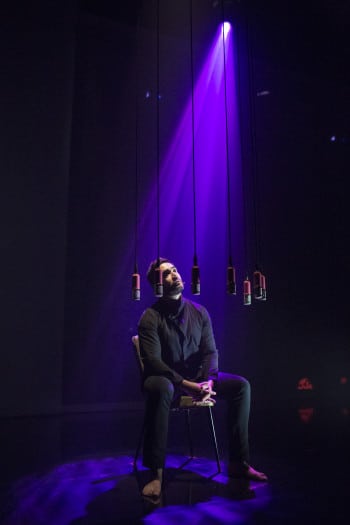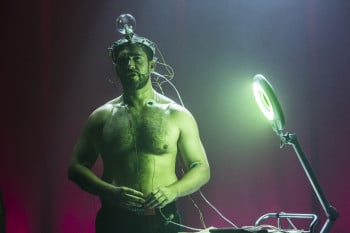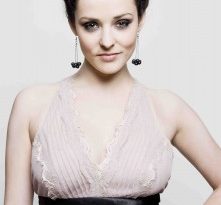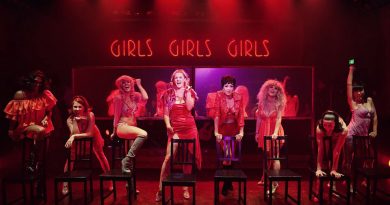The Experiment, Sydney Festival
The Experiment, showing as part of the Sydney Festival, is certainly not passive theatre. You won’t watch it and walk out with nothing much to say. You will turn to the person next to you and immediately question what they thought, while pondering it yourself. It’s the type of theatre that evokes intense feelings, not all of them good. The subject matter is chilling and the way it is illustrated through music, multimedia and set design is jarring and discordant in a way that grates on your senses.

As soon as we enter the theatre, we’re given a small indication of what we’re in for. An image of a typical suburban house is awkwardly jerked around on a full-length transparent screen on the stage. The musical accompaniment is a raucous cacophony of noise and voices that occasionally crescendos to a roar before building again.
The Experiment uses British writer Mark Ravenhill’s monologue of the same name as the starting point for a musical monodrama. It is a collaboration between composer/producer David Chisholm, guitarist Mauricio Carrasco, painter and video artist Emmanuel Bernardoux, media artist Matthew Gingold, guest composer Fernando Garnero and dramaturge Jude Anderson.
The hour-long production opens on Carrasco, who is sitting surrounded by microphones suspended from the ceiling in a sort of prison (scenic sculptor is Nara Demasson). Carrasco ponders a horrifying situation where children are being experimented on to try to save others from an incurable disease.
The narrative changes over time: at first the children are his, then they’re his neighbour’s children. Later on it is suggested that even he was one of them. There are vivid descriptions about children being injected with viruses and diseases and the entire monologue is chilling and uncomfortable. Carrasco’s accented English delivery is almost detached with questioning inflections yet he is compelling.
The musical score by David Chisholm that accompanies the monologue further evokes feelings of apprehension. It builds the tension and gives you the feeling that something worse is to come, although you can’t imagine what it could be. A multimedia presentation shows more jolting imagery of an Australian country homestead and you want to look away in case something horrific comes on screen. But despite the buildup, all it shows is lots of snapshots of men in the foetal position and sitting in a room and not much else.

Similarly, Carrasco pasting heart monitor pads over his chest and arms and a futuristic helmet (designed by Anna Conrick) on also makes you fearful that he might do real damage to himself. However after lighting up the helmet, he simply takes it all off again. Artwork (by Emmanuel Bernardoux) imposed on the transparent screen and on the back of the stage is reminiscent of blood and human cells that later morph into something more romantic and beautiful.
The monologue is broken up with interludes of various techniques performed by Carrasco on his guitar. The most confronting is a scourer and plastic ruler used on an electric guitar, in a way that is terribly screechy but oddly musical. It evokes the feeling of fingernails on a chalkboard which for many audience members, was too much to bear. In another guitar ‘experiment’, a robot plays the twin guitars (designed by Benjamin Kolaitis) and it sounds like a child who has found a guitar and is trying to make as much noise as possible.
Overall, the performance isn’t for the faint hearted. The chilling subject matter and the musical and visual accompaniments get you thinking and using your senses, making you feel quite unsettled at times. For many, it will be refreshing to see such experimental theatre but for the dozen or so people who walked out during the first Sydney Festival performance, what they were feeling was extreme enough for them to vote with their feet. Those who remained were left feeling uncomfortable, horrified and maybe even a bit confused.


